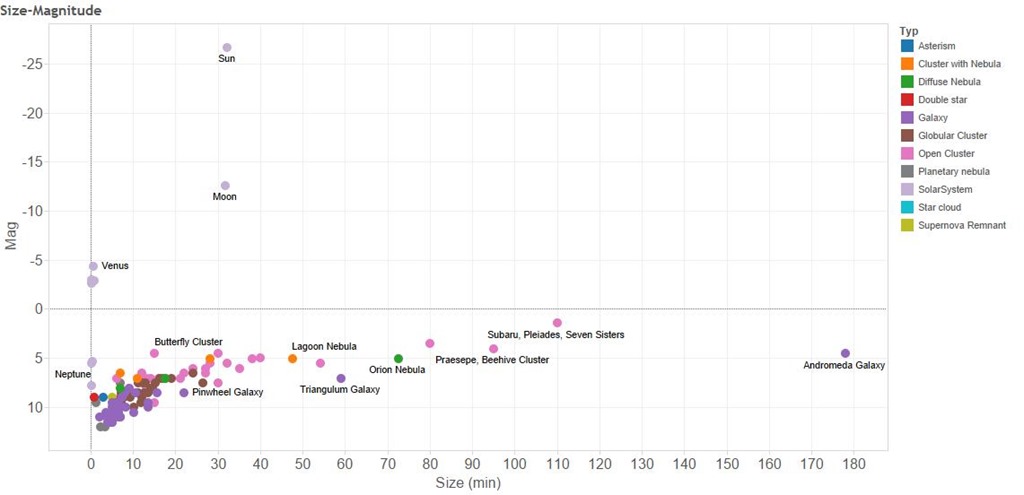Regular readers with a good memory will recall I bought a telescope about 18 months ago. I bemoaned the fact that I bought it in late Spring, since it meant it got dark rather late. I will note here that astronomy is generally incompatible with a small child who might wake you up in the middle of the night, requiring attention and early nights.
Since then I’ve taken pictures of the sun, the moon, Jupiter, Saturn and as a side project I also took wide angle photos of the Milky Way and star trails (telescope not required). Each of these bought their own challenges, and awe. The sun because it’s surprisingly difficult to find the thing in you view finder with the serious filter required to stop you blinding yourself when you do find it. The moon because it’s just beautiful and fills the field of view, rippling through the “seeing” or thermal turbulence of the atmosphere. Jupiter because of it’s Galilean moons, first observed by Galileo in 1610. Saturn because of it’s tiny ears, I saw Saturn on my first night of proper viewing. As the tiny image of Saturn floated across my field of view I was hopping up and down with excitement like a child.
I’ve had a bit of a hiatus in the astrophotography over the past year but I’m ready to get back into it.
My next targets for astrophotography are the Deep Sky Objects (DSOs), these are largish faint things as opposed to planets which are smallish bright things. My accidental wide-angle photos clued me into the possibilities here. I’d been trying to photograph constellations, which turn out to be a bit dull, at the end of the session I put the sensitivity of my camera right up and increased the exposure time and suddenly the Milky Way appeared! Even in rural Wales it was only just visible to the naked eye.
Now I’m keen to explore more of these faint objects. The place to start is the Messier Catolog of objects. This was compiled by Charles Messier and Pierre Méchain in the latter half of the 18th century. You may recognise the name Méchain, he was one of the two French men who surveyed France on the cusp of the Revolution to define a value for the meter. Ken Alder’s book The Measure of All Things, describes their adventures.
Messier and Mechain weren’t interested in the deep sky objects, they were interested in comets and compiled the list in order not to be distracted from their studies by other non-comety objects. The list is comprised of star clusters, nebula and galaxies. I must admit to being a bit dismissive of star clusters. The Messier list is by no means exhaustive, observations were all made in France with a small telescope so there are no objects from the Southern skies. But they are ideal for amateur astronomers in the Northern hemisphere since the high tech, professional telescope of the 18th century is matched by the consumer telescope of the 21st.
I’ve know of the Messier objects since I was a child but I have no intuition as to where they are, how bright and how big they are. So to get me started I found some numbers and made some plots.
The first plot shows where the objects are in the sky. They are labelled, somewhat fitfully with their Messier number and common name. Their locations are shown by declination, how far away from the celestial equator an object is, towards the North Pole and right ascension, how far around it is along a line of celestial latitude. I’ve added the moon to the plot in a fixed position close to the top left. As you can see the majority of the objects are North of the celestial equator. The size of the symbols indicates the relative size of the objects. The moon is shown to the same scale and we can see that a number of the objects are larger than the moon, these are often star clusters but galaxies such as Andromeda – the big purple blob on the right and the Triangulum Galaxy are also bigger than the moon. As is the Orion nebula.
So why aren’t we as familiar with these objects as we are with the moon. The second plot shows how bright the Messier objects are and their size. The horizontal axis shows their apparent size – it’s a linear scale so that an object twice as far from the vertical axis is twice as big. Note that these are apparent sizes, some things appear larger than others because they are closer. The Messier The vertical axis shows the apparent brightness, in astronomy brightness is measured in units of “magnitude” which is a logarithmic scale. This means that although the sun is roughly magnitude –26 and the moon is roughly magnitude –13, the sun is 10,000 times bright than the moon. The Messier objects are all much dimmer than Venus, Jupiter and Mercury and generally dimmer than Saturn.
So the Messier objects are often bigger but dimmer than things I have already photographed. But wait, the moon fills the field of view of my telescope. And not only that my telescope has an aperture of f/10 – a measure of it’s light gathering power. This is actually rather “slow” for a camera lens, my “fastest” lens is f/1.4 which represents a 50 fold larger light gathering power.
For these two reasons I have ordered a new lens for my camera, a Samyang 500mm f/6.3 this is going to give me a bigger field of view than my telescope which has a focal length of 1250mm. And also more light gathering power – my new lens should have more than double the light gathering power!
Watch this space for the results of my new purchase!



